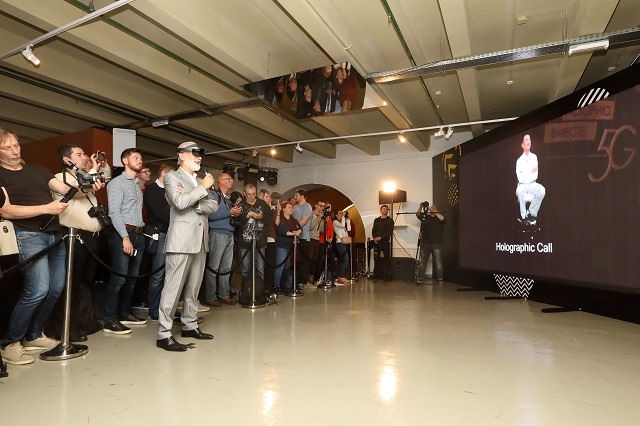Huawei makes a Beeline for Russian 5G
Holographic calls have become the hot 5G use-case so Huawei teamed up with Beeline to do one in Russia.
October 4, 2018

Holographic calls have become the hot 5G use-case so Huawei teamed up with Beeline to do one in Russia.
VimpelCom-owned Beeline rented out the Moscow Museum for this demo designed to show how great 5G is. It came soon after Vodafone tried a similar move in the UK, as the telecoms industry searches desperately for ways to capture the public imagination about a technology that, initially at least, will mainly just provide agility and efficiency to operators.
The quality of this demo seemed like a distinct drop-off from the Vodafone one as it involved ‘mixed reality’ headsets rather than a free-standing holographic projection. As a consequence people were treated to the far less impressive spectacle of a bloke in a suit fumbling blindly around a room while talking to himself.
“This May 2018, Beeline and Huawei signed an agreement to pursue the joint development of 5G in Russia,” said Aiden Wu, CEO of Huawei in Russia. “Our cooperation has been extremely productive, which today’s demonstration has quite clearly shown. We will continue working together to bring the implementation of a new communication standard closer to becoming a worldwide phenomenon and speed up the process of creating new technologies and services based on this standard.”
“The rapid development of modern technologies sets a precedence for operators to provide subscribers with high-quality mobile communications at high speeds,” said Vasyl Latsanych, CEO of PJSC VimpelCom. “That’s why Beeline is already preparing its network infrastructure and is conducting research on how to make a rational transition to 5G technologies.”
Huawei was keen to stress that this demo was done using its gNodeB commercially available 5G base station over the 27 GHz band. It also listed a bunch of other kit, but you get the idea. No bandwidth claims were made but it used MIMO 64×64 tech. There was talk about how great this sort of thing will be for virtual experiences that save you having to leave the house.
About the Author(s)
You May Also Like











_1.jpg?width=300&auto=webp&quality=80&disable=upscale)


.png?width=800&auto=webp&quality=80&disable=upscale)